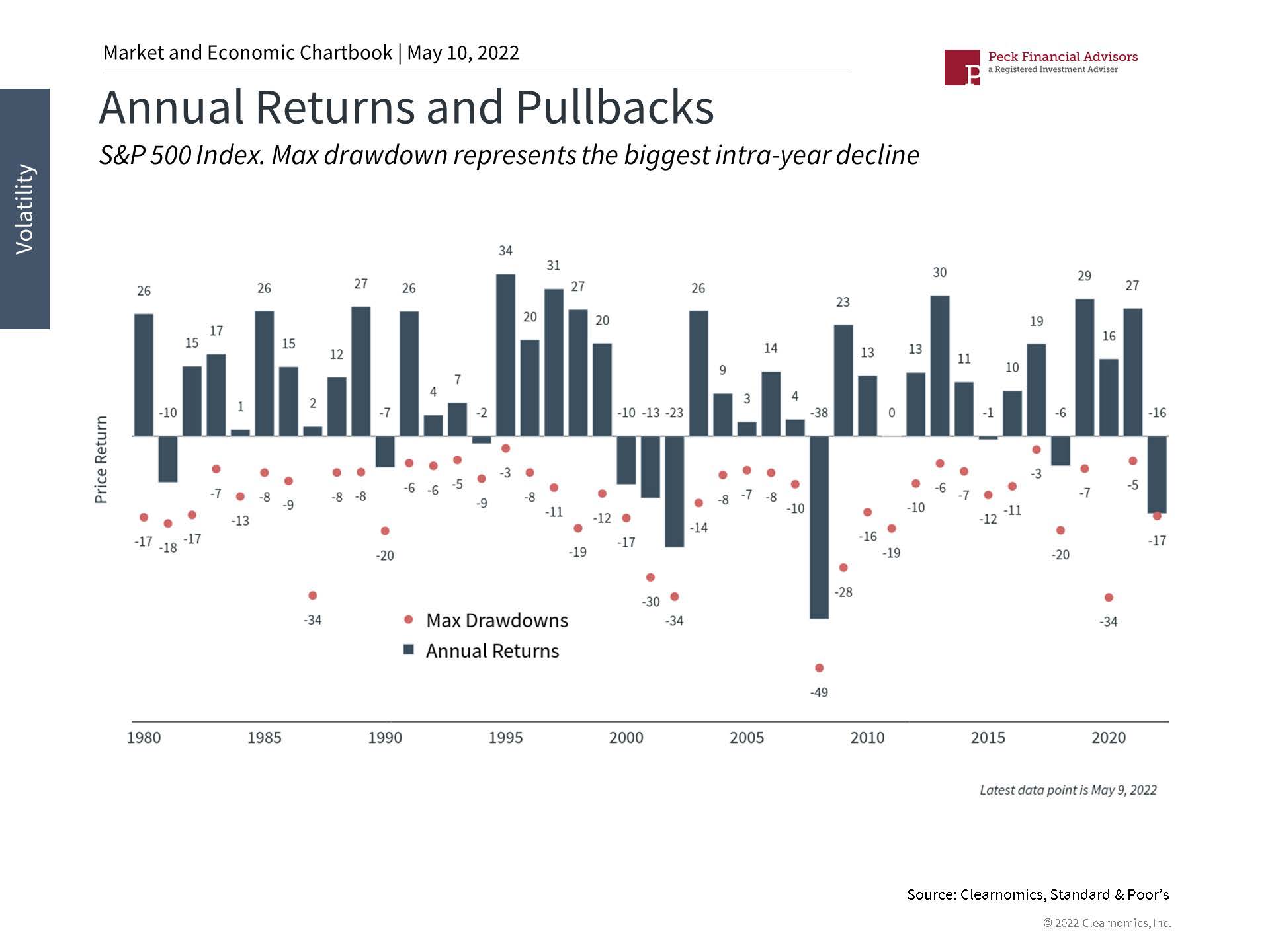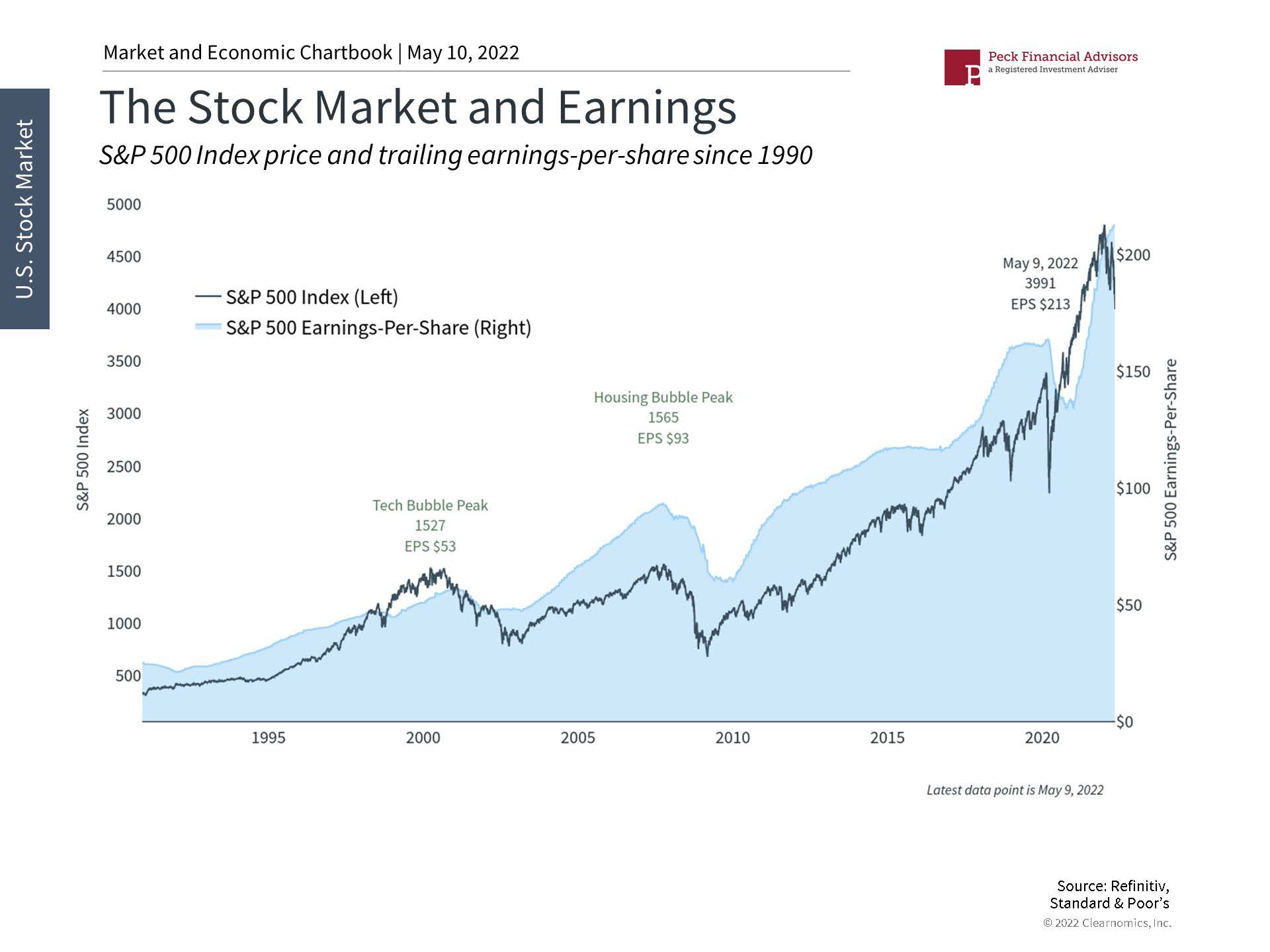Why Investing Is Hard but Still Worth Doing in Today's Market
Author: James Liu, CFA. Founder and Head of Research, Clearnomics
Perhaps nothing summarizes the investor experience better than the old quote that "nothing worth doing is easy." The current market environment, as uncomfortable as it may be, serves as a reminder that staying invested is difficult. The very definition of investing involves sacrificing what we could buy and consume today in order to achieve more tomorrow. Over long periods, this is how all investors can transform hard-earned savings into true wealth and financial freedom. What can investors do to focus on the long run when the daily headlines and market swings are alarming?
The tendency to react to what's happening today at the expense of the next year or decade is a natural one. Last week, the Federal Reserve raised interest rates by half a percent (50 basis points), the largest increase in over twenty years. After a short recovery, major stock market indices began to struggle once again. At the moment, all major U.S. indices are down more than 10% for the year, with the Nasdaq now deeper in bear market territory. This is no doubt a challenging time for many investors, both emotionally and financially, especially for those who are either accustomed to or have only experienced the rising markets of the past decade or more.
One of the core principles of investing is that there is no reward without risk. Simply put, having the fortitude to stick it out when times are tough is exactly why long-term investors are rewarded. In general, this is why stocks have historically achieved greater average returns than "safer" assets such as bonds: these returns are compensation for withstanding greater uncertainty. Occasionally, there may be times when investing seems easy and all prices rise, irrespective of risk, such as over the past two years or during the dot-com boom. When these periods inevitably end, it becomes clear which investors were truly following a disciplined plan and which were just following trends. In times like these, it's important for long-term investors to remember a few historical facts.
First, it's important to maintain a broader perspective. While the stock market is in the red for the year, zooming out paints a very different picture. The S&P 500 has gained 65% over the past three years, 22% since the pre-pandemic peak in early 2020, and 79% from the pandemic bottom. While investors may prefer a smooth ride, with steady gains day after day, this is unfortunately not how the market operates. Instead, the price of long-term gains is the ability to stomach short-term declines.
Second, a common refrain from the investment profession is that "market volatility is normal." What this typically means is that the stock market can swing wildly even when there is little new information. This year, the S&P 500 has experienced four distinct 5% declines. While this may seem like a lot, the average year experiences four to five of these pullbacks, most of which recover in weeks or months. The pandemic caused 12 such pullbacks in 2020 and there were eight in 2019 during the global growth scare that year - a time when many expected an immediate recession which never materialized.
Third, what drives markets in the long run are not day-to-day headlines, stock predictions, or even year-end targets. Instead, the vibrancy of the economy, the strength of the consumer, and the profitability of companies large and small are what support stock prices over the course of decades. After all, owning a stock is nothing more than owning a share of the profits of a company. While interest rates, inflation, geopolitics, and other factors affect the calculated value of this ownership, these effects also tend to average out over time. At the moment, consensus expectations are that S&P 500 earnings-per-share could rise 10% this year and 9 to 10% each of the next two years. Even if these forecasts decline a bit, these levels of growth can help to support valuations and market returns.
None of this discussion is meant to to ignore or downplay the challenges that lie ahead for markets. However, many of these challenges are already widely understood by investors who have been grappling with them for months, if not years. The point is that investing activity can occur over many timeframes, so it's important for investors to pick the one that matches their financial goals, and to know that the process will be worth it even if it isn't always easy or comfortable. Below are three charts that put this challenging market in perspective.
1. Major indices have swung wildly over the past week
Stock Market Pullbacks
All major indices are in correction territory and the Nasdaq is officially in a bear market. This level of volatility, while extreme compared to the past two years, is par for the course when investing in stocks. In fact, the reason stock market investors are rewarded over time is exactly because they are willing to withstand a higher level of risk.
2. Staying invested is the best way to manage challenging markets
The Value of Staying Invested
While the temptation to react to market events is natural, history shows that simply staying invested is often the better approach. This is because timing the market is hard if not impossible. Big down days are often followed by up days shortly thereafter. Trying to predict these day-to-day swings is unnecessary and often counterproductive.
3. In the long run, fundamentals are what matter
The Stock Market and Earnings
Over the course of years and decades, fundamentals like valuations and earnings matter much more than daily headlines on the Fed, individual stocks, politics and more. The strength of the economy, fueled by business innovation and consumer spending, have propelled the stock market forward cycle after cycle.
The bottom line? Although the market environment is challenging, investors ought to remember that staying invested to achieve financial goals is worth the short-term discomfort.




